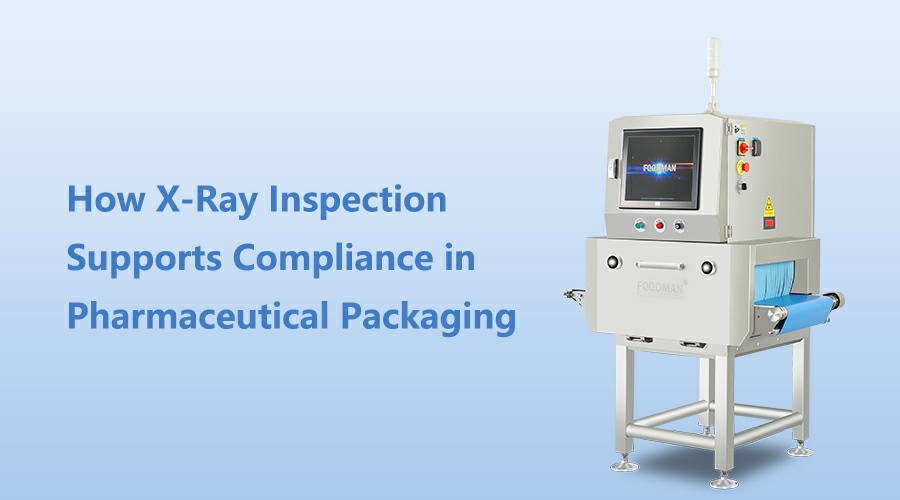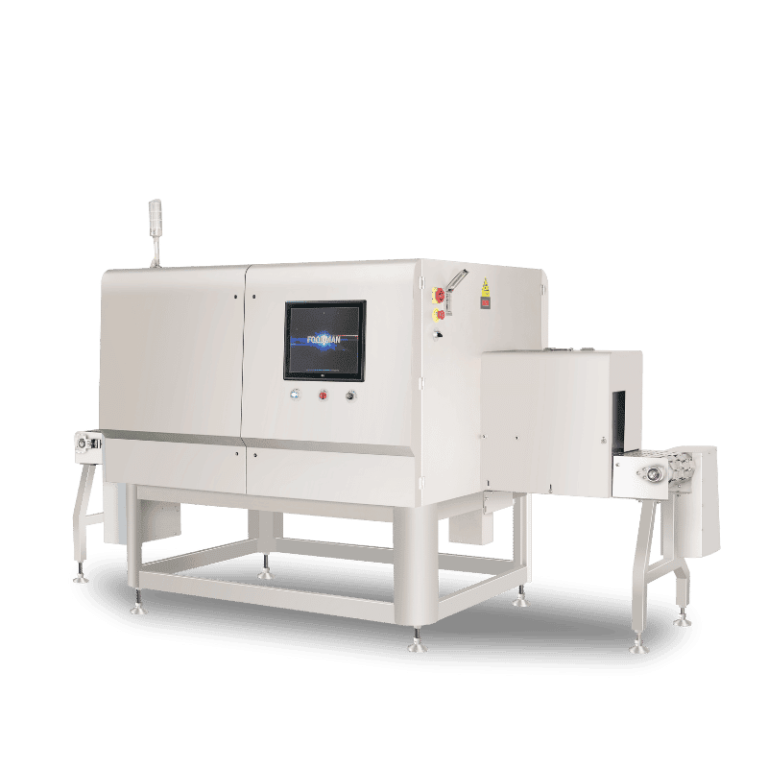Introduction
Growing Regulatory Demands in Pharmaceutical Packaging
The pharmaceutical industry is under increasing regulatory pressure to ensure product safety, integrity, and traceability. Regulatory bodies such as the FDA, European Medicines Agency (EMA), and global GMP guidelines have introduced stringent standards governing packaging quality. These requirements cover everything from container closure integrity and fill-level verification to contamination control and serialization. To meet these growing demands, pharmaceutical manufacturers must adopt advanced technologies that offer precision, consistency, and verifiable compliance—this is where X-Ray inspection systems come into play.

Risks of Non-Compliance: Product Recalls, Patient Safety, Brand Damage
Non-compliance in pharmaceutical packaging can lead to severe consequences. Undetected packaging defects or foreign body contamination may compromise patient safety, trigger expensive product recalls, and permanently damage a company’s brand reputation. A single defective blister pack, missing tablet, or foreign object in a sealed vial can violate regulatory mandates and cause public trust to erode. Therefore, proactive quality assurance measures—such as deploying a reliable X-Ray inspection machine—are not just operational choices but strategic safeguards.
The Role of X-Ray Inspection Systems, X-Ray Inspection Machines, and X-Ray Inspection Equipment in Achieving Compliance
Modern X-Ray inspection equipment offers unparalleled capabilities in pharmaceutical quality control. These systems enable non-destructive, inline analysis of packaging contents in real time. A state-of-the-art X-Ray inspection system can detect missing pills, broken components, and foreign materials such as glass, metal, or dense plastic—without disrupting high-speed production lines. While often associated with food X-Ray inspection, the same core technology is optimized and applied across pharmaceutical packaging lines to meet regulatory requirements. By integrating a validated X-Ray inspection machine into the process, manufacturers can ensure every product meets the highest standards of safety and compliance.
Key Compliance Requirements in Pharmaceutical Packaging
Overview of Global Regulations
Pharmaceutical packaging is tightly governed by a range of international regulations designed to ensure product quality, patient safety, and supply chain transparency. In the U.S., FDA 21 CFR Part 211 requires strict control over drug packaging and labeling processes. Meanwhile, EU GMP Annex 1 emphasizes sterile product packaging and contamination prevention. Standards like USP <670> define requirements for container-closure systems and desiccant use. Compliance with these regulations demands accurate, automated inspection tools—such as X-Ray inspection systems—to monitor every unit inline and ensure no defect slips through.
Requirements for Integrity Checks, Contamination Control, and Traceability
One of the cornerstones of pharmaceutical packaging compliance is ensuring container integrity—verifying that no leaks, cracks, or seal failures exist that could compromise product sterility. At the same time, contamination control is critical. A single foreign object such as a piece of glass, metal fragment, or plastic shard can render a drug unsafe. X-Ray inspection equipment plays a key role in addressing these needs by offering real-time detection of physical contaminants and structural anomalies. Advanced X-Ray inspection machines also contribute to traceability by logging inspection data for every batch, which supports regulatory audits and product recalls if necessary. Though traditionally associated with food X-Ray inspection, the technology’s precision and speed make it equally vital in pharmaceutical operations.
Validation and Documentation Standards
Regulators require not just inspection but proof of inspection effectiveness. That’s why validation of the X-Ray inspection system is a mandatory step before implementation in GMP environments. Validation includes installation qualification (IQ), operational qualification (OQ), and performance qualification (PQ), ensuring the X-Ray inspection machine consistently detects defined defect types at required thresholds. In addition, systems must maintain detailed audit trails and produce inspection reports aligned with standards like 21 CFR Part 11, ensuring data integrity. Modern X-Ray inspection equipment supports these requirements by offering automated report generation, encrypted data storage, and integration with pharmaceutical quality management systems.
Capabilities of X-Ray Inspection Systems for Compliance
Non-Destructive Inspection of Tablets, Vials, Blister Packs, and Injectables
Pharmaceutical packaging demands 100% inspection without compromising product sterility or integrity. Modern X-Ray inspection systems are specifically designed to perform non-destructive testing, allowing manufacturers to inspect sensitive products—such as blister packs, glass vials, pre-filled syringes, and injectables—without opening or damaging them. Unlike invasive techniques, an X-Ray inspection machine can visualize the internal structure of packaging in real time, identifying defects like cracks, misaligned tablets, or incorrect sealing. This ability not only ensures compliance with GMP standards but also reduces product loss during quality checks.

Detection of Foreign Bodies
While food X-Ray inspection is widely known for detecting physical contaminants in consumables, the same core technologies have been adapted for pharmaceutical use with even higher sensitivity. X-Ray inspection equipment in pharmaceutical settings is engineered to detect extremely small foreign particles such as fragments of metal, glass, stone, or dense plastic that may have entered during the filling or sealing process. These foreign bodies pose serious risks to patient safety and must be identified with absolute accuracy. With advanced imaging software and high-resolution sensors, modern X-Ray inspection systems enable manufacturers to meet and exceed regulatory expectations for contaminant control.
Verification of Count, Fill Levels, Missing/Damaged Components
Beyond contamination detection, an X-Ray inspection machine also plays a vital role in verifying quantitative and structural parameters. Whether ensuring that each blister pack contains the correct number of tablets, or checking that a vial or ampoule is filled to the appropriate level, X-Ray inspection systems offer precise measurement tools. They can also detect missing inserts, broken components, or misplaced caps. These capabilities are especially important in multi-component medical kits or high-value biologics, where missing or incorrect contents can lead to regulatory non-compliance or compromised treatment outcomes. With the help of sophisticated detection algorithms, X-Ray inspection equipment provides manufacturers with actionable insights to safeguard product integrity at every step.
Traceability and Audit Readiness
How X-Ray Inspection Equipment Captures and Stores Image Data
In the pharmaceutical industry, traceability is not a luxury—it’s a regulatory mandate. Modern X-Ray inspection systems are designed to automatically capture and store high-resolution image data for every product that passes through the inspection point. Each scan performed by an X-Ray inspection machine can be linked to a specific batch, time stamp, operator ID, and inspection result. This digital audit trail forms the backbone of compliance with global regulations, such as FDA 21 CFR Part 11 and EU GMP Annex 11. By storing inspection data securely, manufacturers can not only prove that each product met quality requirements, but also review historical records during audits, investigations, or product recalls.
Integration with MES/ERP Systems for Batch Traceability
Today’s X-Ray inspection equipment is built with connectivity in mind. These systems can seamlessly integrate with MES (Manufacturing Execution Systems) and ERP (Enterprise Resource Planning) platforms to ensure full batch traceability. By doing so, every inspection performed by the X-Ray inspection system is linked to production records, inventory logs, and shipping details. This end-to-end visibility is essential for maintaining compliance in the event of a deviation, recall, or regulatory review. Whether used in pharmaceutical or food X-Ray inspection, this level of integration empowers manufacturers to pinpoint and isolate problems quickly—minimizing risk and ensuring consumer safety.
Real-Time Reporting and Compliance with Data Integrity (ALCOA+ Principles)
Data integrity is at the heart of regulatory compliance, and X-Ray inspection machines support this through real-time reporting capabilities aligned with ALCOA+ principles—ensuring that data is Attributable, Legible, Contemporaneous, Original, Accurate, and complete with additional elements like Consistency and Endurance. These systems automatically log inspection outcomes in real time and ensure that all records are tamper-proof, time-stamped, and securely stored. With such features, X-Ray inspection equipment not only provides a technical solution for quality control but also acts as a digital compliance partner, simplifying audits and improving confidence in regulatory submissions.
Supporting Validation and Quality Assurance
IQ/OQ/PQ Procedures for X-Ray Inspection Machines
To meet regulatory expectations, every X-Ray inspection machine used in pharmaceutical packaging must undergo thorough validation. This includes the standard IQ/OQ/PQ (Installation Qualification, Operational Qualification, Performance Qualification) protocols. During IQ, the manufacturer verifies that the X-Ray inspection equipment is installed correctly and meets all design specifications. OQ ensures that the system functions as intended under defined operating conditions. PQ confirms that the X-Ray inspection system consistently performs according to predetermined criteria during real production. These validation steps are essential for demonstrating compliance with GMP and FDA guidelines, and they form the foundation of a pharmaceutical quality system.
System Calibration, Sensitivity Tests, and Automatic Rejection Validation
Regular calibration and sensitivity checks are necessary to maintain the accuracy and reliability of X-Ray inspection systems. These tests verify that the equipment detects predefined contaminants—such as metal, glass, or dense plastic—at specified sizes and locations. In addition, automatic rejection validation ensures that the X-Ray inspection machine correctly identifies and removes non-conforming products in real time. These processes are equally relevant in both pharmaceutical and food X-Ray inspection environments, where failure to reject defective items can compromise consumer safety and regulatory compliance. Proper documentation of these activities is critical for audits and internal quality assurance reviews.
Role in Continuous Improvement and CAPA (Corrective and Preventive Actions)
Modern X-Ray inspection equipment not only supports real-time quality control but also plays a proactive role in continuous improvement and CAPA programs. By providing detailed inspection data and historical trends, X-Ray inspection systems help quality teams identify recurring issues, investigate root causes, and implement corrective actions. Moreover, the traceability and reporting features of advanced X-Ray inspection machines support preventive strategies—reducing the likelihood of defects and non-compliance over time. In pharmaceutical settings where accountability is critical, these capabilities make X-Ray inspection a cornerstone of both operational excellence and regulatory alignment.
Case Applications in Pharmaceutical Packaging
Blister Pack Inspection: Missing Tablets, Foil Damage, Double Fills
Blister packs are one of the most commonly used pharmaceutical packaging formats, but they present unique inspection challenges. Missing tablets, broken pills, foil punctures, and double fills are frequent issues that can lead to serious quality control concerns. A modern X-Ray inspection system offers a non-destructive, high-resolution solution that scans each blister in real time. By detecting shape inconsistencies, voids, or density anomalies, the X-Ray inspection machine can instantly identify defects—without interrupting production flow. Compared to traditional vision-based methods, X-Ray inspection equipment provides deeper analysis through the foil and even within opaque blister layers. While food X-Ray inspection often focuses on foreign bodies, in pharma, the emphasis shifts to count accuracy, fill validation, and packaging integrity—making X-ray technology indispensable.
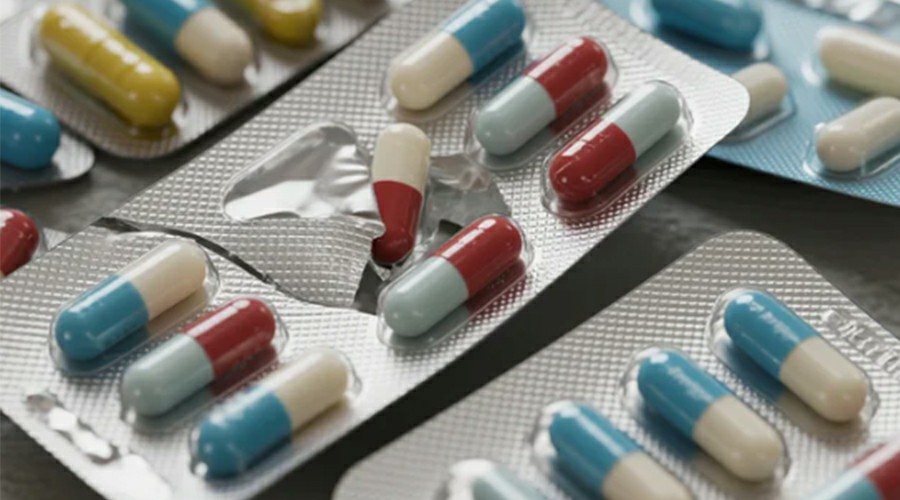
Vial Inspection: Foreign Particles, Liquid Levels, Closure Verification
Glass vials containing liquid drugs or biologics must be rigorously inspected to ensure patient safety. X-Ray inspection systems are especially effective in this context, as they can detect foreign particles—such as metal shavings, glass fragments, or dense organic materials—suspended in liquid. Additionally, X-Ray inspection machines can verify liquid fill levels, ensuring dosage consistency and regulatory compliance. Closure inspection is another critical function, as improperly sealed caps or misaligned rubber stoppers can compromise sterility. Advanced X-Ray inspection equipment can evaluate these closure components even through thick glass, offering pharmaceutical manufacturers peace of mind and a reliable path to compliance. Though food X-Ray inspection also handles liquids (e.g., sauces, oils), the pharma sector demands even stricter precision and traceability.
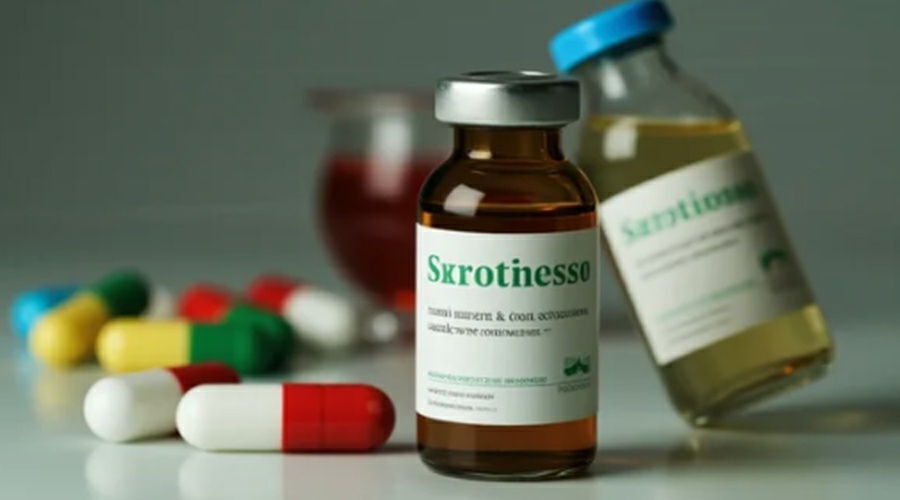
Combination Kits and Device Packaging: Component Presence, Seal Integrity
Pharmaceutical combination kits, which may include syringes, instruction leaflets, applicators, or multiple drug units, require multi-point inspection to verify the presence and correct positioning of all components. In such complex packaging, X-Ray inspection systems shine by providing a comprehensive internal view that verifies component completeness without opening the package. The X-Ray inspection machine can detect missing items, assess seal integrity, and even identify foreign objects embedded between layers of packaging material. Whether it’s inspecting inhaler kits, diagnostic tools, or self-injection devices, the right X-Ray inspection equipment ensures that nothing is overlooked. This level of control is just as critical as in food X-Ray inspection, where multipack products must also be validated for count and configuration. The ability to inspect all components in one pass translates into higher efficiency and reduced risk of non-compliance.
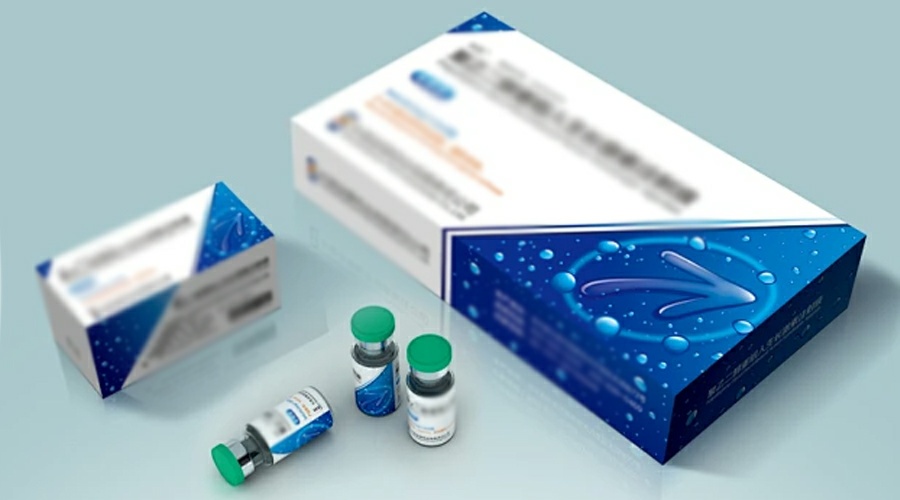
Benefits of Using X-Ray Inspection for Compliance
Reduced Product Recalls and Regulatory Risk
In the highly regulated pharmaceutical sector, even minor packaging errors or undetected contaminants can lead to costly product recalls and serious regulatory consequences. Implementing a high-performance X-Ray inspection system significantly reduces this risk. By offering real-time, non-destructive analysis of every unit on the production line, X-Ray inspection equipment ensures that defects are identified and removed before products leave the facility. Unlike some traditional methods, X-Ray inspection machines detect a wide range of contaminants—such as glass, stone, or metal fragments—that are otherwise hard to find, especially in sealed vials or foil blisters. Drawing from innovations in food X-Ray inspection, pharmaceutical systems are optimized to meet even stricter accuracy and traceability standards, minimizing the likelihood of non-compliance and reinforcing patient safety.
Enhanced Product Quality and Patient Safety
The ultimate goal of pharmaceutical manufacturing is to ensure every product is safe, effective, and accurately packaged. X-Ray inspection systems contribute directly to this goal by verifying component integrity, proper fill levels, and the absence of harmful foreign materials. These checks, carried out by advanced X-Ray inspection machines, help guarantee that no defective or incomplete item reaches the end user. Leveraging principles first proven in food X-Ray inspection—such as dual-energy scanning and adaptive imaging—these systems are tailored to handle fragile vials, opaque containers, and combination kits without compromising performance. In doing so, X-Ray inspection equipment strengthens a manufacturer’s ability to protect patients and uphold stringent quality standards.
Greater Operational Transparency and Audit Preparedness
One of the key benefits of using X-Ray inspection machines in pharmaceutical packaging is the ability to generate complete and traceable inspection records. Modern X-Ray inspection equipment integrates seamlessly with MES and ERP systems, enabling batch-level data capture, storage, and retrieval. This transparency is invaluable during regulatory inspections or third-party audits, as it provides documented evidence of compliance with standards such as FDA 21 CFR Part 11 and EU GMP Annex 1. The level of operational visibility offered by X-Ray inspection systems not only supports accountability but also accelerates internal quality reviews and continuous improvement efforts. Just as in food X-Ray inspection, where traceability is key to HACCP and BRCGS compliance, pharmaceutical companies gain a strategic advantage with digital inspection records that align with ALCOA+ data integrity principles.
Conclusion
Pharmaceutical packaging compliance is non-negotiable in an industry where patient safety, regulatory oversight, and product integrity are paramount. X-Ray inspection systems have emerged as one of the most effective tools for ensuring that packaged pharmaceutical products meet the stringent standards set by authorities such as the FDA, EMA, and WHO.
By enabling non-destructive, high-precision inspection of blister packs, vials, tablets, and combination kits, advanced X-Ray inspection equipment helps pharmaceutical manufacturers detect foreign materials, verify component presence, and ensure packaging integrity in real time. Compared to traditional inspection technologies, X-Ray inspection machines offer greater accuracy, faster throughput, and more robust traceability—making them indispensable for modern pharmaceutical production lines.
Beyond basic detection, today’s intelligent X-Ray inspection systems integrate seamlessly with MES and ERP systems, supporting digital traceability and full audit readiness. Real-time imaging, automatic rejection, and data integrity features all contribute to meeting compliance with ALCOA+ principles and good manufacturing practices (GMP). Even food X-Ray inspection technology, which shares similar goals in terms of safety and contamination control, has proven valuable in cross-industry applications such as healthcare supplements and nutraceutical packaging.
As pharmaceutical manufacturers face increasing regulatory pressure and global competition, investing in next-generation X-Ray inspection equipment is no longer optional—it is a strategic imperative. Proactive adoption of these technologies ensures not only compliance, but also reinforces consumer trust, minimizes product recalls, and positions your organization for long-term success.
In conclusion, X-Ray inspection is more than a compliance tool—it’s a comprehensive quality assurance solution that safeguards patients, protects your brand, and enhances operational excellence.
FAQ
Q: What role does X-Ray inspection play in pharmaceutical packaging compliance?
A: X-Ray inspection systems help ensure regulatory compliance by detecting packaging defects, foreign contaminants, fill-level inaccuracies, and missing components—all in real time. They support validation processes (IQ/OQ/PQ), data traceability, and audit readiness, making them essential in meeting FDA, EMA, and GMP requirements.
Q: Are X-Ray inspection systems safe for use with pharmaceutical products?
A: Yes. X-Ray inspection machines used in pharmaceutical environments emit very low doses of radiation (typically <0.1 Gy), far below levels that could affect product integrity or sterility. They provide non-destructive inspection without altering the product.
Q: What types of pharmaceutical packaging can be inspected using X-Ray technology?
A: X-Ray inspection machines are used for various formats, including blister packs, vials, pre-filled syringes, ampoules, and complex combination kits. They verify presence, count, seal integrity, fill levels, and detect foreign objects—all without damaging the packaging.

